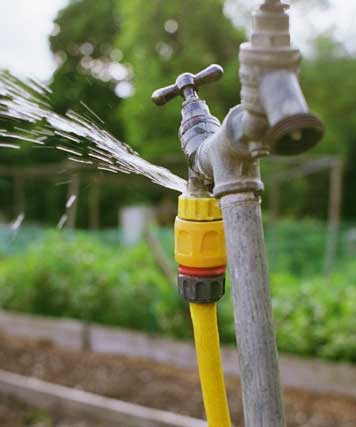How to Examine If Your Residence Has a Concealed Leak
How to Examine If Your Residence Has a Concealed Leak
Blog Article
How do you actually feel with regards to Locating water leaks?

Early detection of dripping water lines can reduce a potential catastrophe. In addition to saving you money, it will certainly minimize the aggravation and irritation. The moment you discover a leakage, calling your plumber for repair services is the most effective solution. However, some small water leaks may not be visible. Here are some hacks that aid if you can not identify it with your nude eyes.
1. Analyze the Water Meter
Checking it is a proven way that assists you uncover leakages. If it moves, that suggests a fast-moving leakage. This implies you might have a slow leak that can even be underground.
2. Examine Water Consumption
Examine your water costs and track your water usage. As the one paying it, you should discover if there are any kind of discrepancies. If you find sudden changes, regardless of your consumption being the same, it indicates that you have leakages in your plumbing system. Remember, your water expense need to fall under the same range on a monthly basis. A sudden spike in your bill suggests a fast-moving leakage.
A consistent boost every month, even with the very same habits, reveals you have a slow leakage that's likewise gradually escalating. Call a plumber to completely inspect your home, especially if you feel a cozy area on your floor with piping below.
3. Do a Food Coloring Examination
When it comes to water consumption, 30% comes from toilets. Examination to see if they are running appropriately. Decrease specks of food shade in the storage tank as well as wait 10 minutes. If the color in some way infiltrates your dish throughout that time without flushing, there's a leak between the tank and also dish.
4. Asses Exterior Lines
Don't neglect to examine your outdoor water lines also. Ought to water permeate out of the connection, you have a loosened rubber gasket. One little leak can throw away lots of water and also spike your water expense.
5. Evaluate the scenario and check
Homeowners ought to make it a behavior to check under the sink counters as well as also inside cabinets for any bad odor or mold and mildew development. These two red flags suggest a leakage so prompt interest is called for. Doing regular evaluations, also bi-annually, can conserve you from a major trouble.
Examine for stainings and also compromising as most appliances and also pipes have a life expectancy. If you think dripping water lines in your plumbing system, do not wait for it to intensify.
Early discovery of dripping water lines can minimize a possible catastrophe. Some little water leakages might not be visible. Inspecting it is a guaranteed method that aids you uncover leaks. One little leakage can lose heaps of water as well as surge your water costs.
If you believe dripping water lines in your plumbing system, don't wait for it to escalate.
WARNING SIGNS OF WATER LEAKAGE BEHIND THE WALL
PERSISTENT MUSTY ODORS
As water slowly drips from a leaky pipe inside the wall, flooring and sheetrock stay damp and develop an odor similar to wet cardboard. It generates a musty smell that can help you find hidden leaks.
MOLD IN UNUSUAL AREAS
Mold usually grows in wet areas like kitchens, baths and laundry rooms. If you spot the stuff on walls or baseboards in other rooms of the house, it’s a good indicator of undetected water leaks.
STAINS THAT GROW
When mold thrives around a leaky pipe, it sometimes takes hold on the inside surface of the affected wall. A growing stain on otherwise clean sheetrock is often your sign of a hidden plumbing problem.
PEELING OR BUBBLING WALLPAPER / PAINT
This clue is easy to miss in rooms that don’t get much use. When you see wallpaper separating along seams or paint bubbling or flaking off the wall, blame sheetrock that stays wet because of an undetected leak.
BUCKLED CEILINGS AND STAINED FLOORS
If ceilings or floors in bathrooms, kitchens or laundry areas develop structural problems, don’t rule out constant damp inside the walls. Wet sheetrock can affect adjacent framing, flooring and ceilings.
https://www.servicemasterbyzaba.com/blog/how-to-detect-water-leakage-in-walls/

I'm certainly very fascinated with Finding hidden leaks and I hope you enjoyed reading our page. Liked our blog? Please share it. Let other people check it out. Many thanks for your time spent reading it.
Report this page